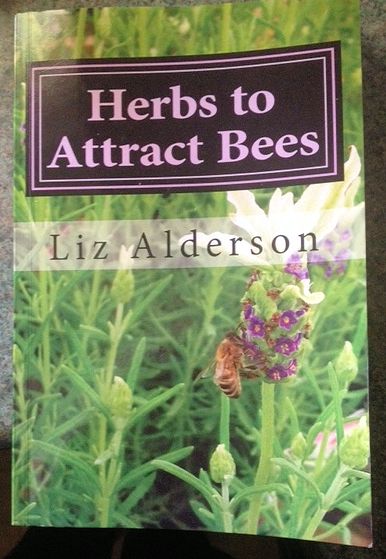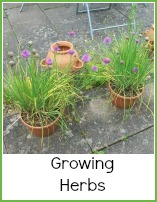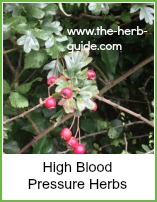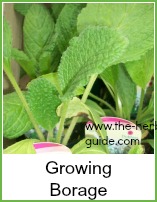- The Herb Guide Home
- Growing Herbs
- Growing Lemon Balm
Growing Lemon Balm
As an Amazon Associate I earn from qualifying purchases
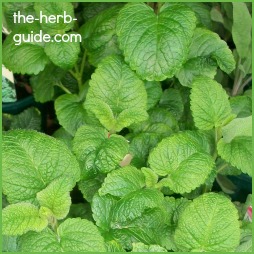
Growing lemon balm is quite easy. It’s a hardy perennial and can be propagated either by seed, cuttings or division.
It grows up to 2 ft (60cm) tall and has fleshy, hairy leaves.
As its name suggests, it has a distinct lemon taste.
Its common name is 'Bee Balm' and that reflects on it being a fabulous food for bees.
Plant some away from your sitting area and let it flower to feed our lovely bees.
Save the Planet - urban bees are doing better than country bees - read how you can help the 'cause' - all is not lost!
- cultivation tips
- herbal cosmetics
- herbal remedies
- preserve herbs
- 150 bee friendly plants
- cope with bee stings
- gardener's glossary
All this and more - available now via Amazon (Kindle version as well as paperback)
Use it generously in cooking, as its flavour becomes less obvious.
It goes well with fruit cocktails, fish dishes and in cool summer drinks as well as milk puddings.
It’s also popular in pot-pourri and perfume.
Lemon balm tea is said to be calming and relaxing and will ward off headaches.
The flowers have a lot of nectar and will attract bees.
Growing Lemon Balm
Any reasonable soil and spot will do – a really easy plant.
Sow seed in spring and thin out to 2 ft (60cm) apart. Or you can plant divisions in spring or autumn.
Keep free from weeds and remove flowers to encourage more leaves to grow.
If you have divided your plants in autumn (fall) then they may need a bit of protection over the winter – either in a cold frame or mulched with straw to protect from the frost.
Don’t cut the plants too far back on the last harvesting of the season.
If it shoots early in the spring, then keep a watch for frosts and protect the plants if you think it’s going to be very cold – it won’t kill the roots, but it will damage the leaves and delay your using them. I save bubble wrap that I get from parcels and use that to cover plants if there's going to be a frost. A good way to recycle and reuse materials that would otherwise go to landfill.
Harvesting Lemon Balm
Use the leaves as you need them.
Lemon balm is not a very good candidate for domestic drying, but you could freeze some in ice cube trays if you want or freeze whole leaves for use in cooking.
Growing Lemon Balm Indoors
You can cut back a plant and bring it indoors for winter – it gives a
lovely scent, but can grow quite large. Alternatively, put one in the
greenhouse and you should be able to cut for most of the winter.
As long as you keep pinching the flowers off, the leaves should continue to grow.
Rescue Remedy for Lemon Balm
If you’re lucky enough to have a patch of lemon balm growing, but it’s
got out of hand, then lift and divide the plants in autumn (fall) when
they are beginning to die down.
Spring would be OK as well.
Weed the area thoroughly and give the plants some tender loving care until they’re established – they should be fine and you will be rewarded with lovely healthy plants.
Other pages you might find useful
I may receive a commission if you purchase something mentioned in this post. See more details here This will not affect the amount you pay.

